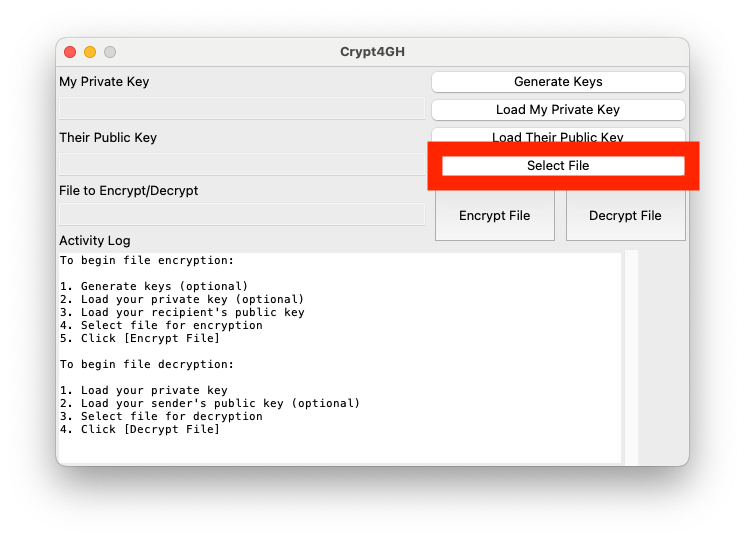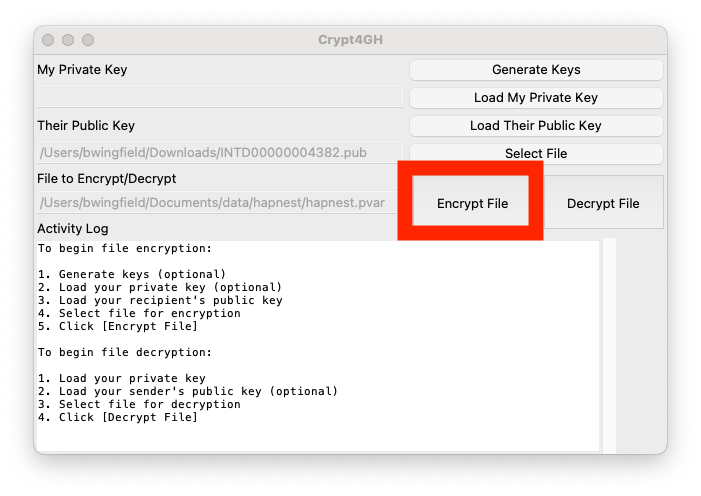Encrypt your data with the crypt4gh GUI
Encrypting your data with the crypt4gh graphical user interface (GUI) is good when:
- You don't want to use a terminal
- You are testing the platform. Note the GUI can only encrypt one file at a time.
You must encrypt your data if you want to use the PGS calculation service.
tip
Users that prefer to work with terminals and CLIs might prefer to use the crypt4gh python package
Step by step guide
1. Install crypt4gh-gui
- Navigate to the crypt4gh-gui repository
- Select the most recent release

- Download the release for your platform (Linux, macOS, or Windows)
- Extract the archive and open the executable file
note
- macOS users may get a warning that the executable file is not verified
- Many open source applications like
crypt4gh-guiare unsigned and will trigger this warning - To bypass the warning you must open Privacy & Security in the settings menu, then scroll to the bottom and select "open anyway"
2. Download your unique public key from the platform
- View your existing sample sets
- If you haven't created a sampleset yet, start the data upload process
- If you're unsure how to start uploading your data, check out the data upload tutorial here
- Click "Launch job" to view details about your existing sampleset
- Download your public key (it will appear in your downloads folder, e.g.
INTD00000000027.pub)
tip
- Each public key has a linked secret 'private' key, which we store securely on the platform
- We use the secret key to temporarily decrypt your data and calculate PGS when you submit jobs
- The secret key automatically expires 2 weeks after it's created to keep your data safe
- Any encrypted data with an expired secret key cannot be decrypted and are automatically deleted on the platform
- You'll need to restart the data encryption process with a new public key if more than 2 weeks have passed since you started the data upload process
3. Load the public key

4. Select the file you want to encrypt

note
- Only one file can be encrypted at a time, meaning for e.g. a triplet of .psam, .pvar and .pgen files you will need to encrypt each file one by one.
5. Encrypt the file

note
- The GUI will give the error message: 'No private key supplied, temporary private key will be generated'
- This is expected and not something to worry about.
6. Continue to upload your encrypted data
You're now ready to upload your encrypted data.
warning
- Always encrypt your data, even if the data are not sensitive and publicly available (e.g. 1000 Genomes)
- If you submit jobs using unencrypted data, they will always fail after some time